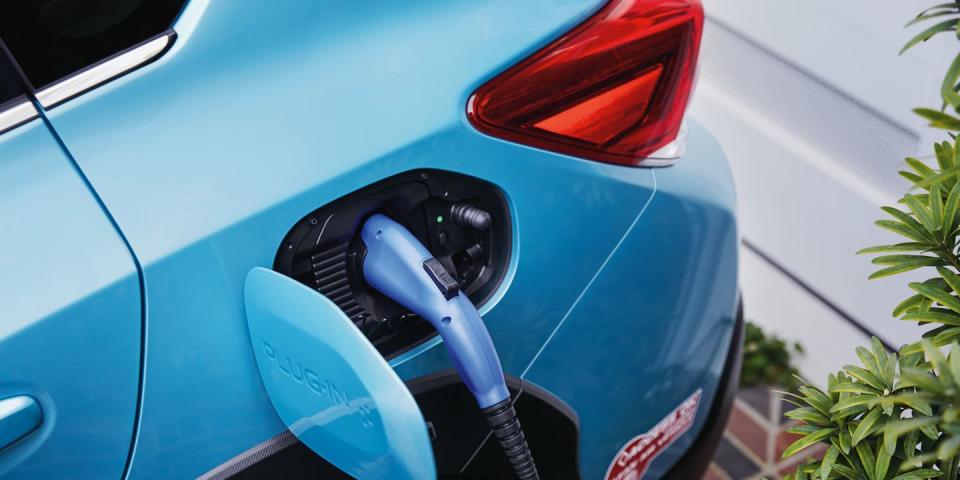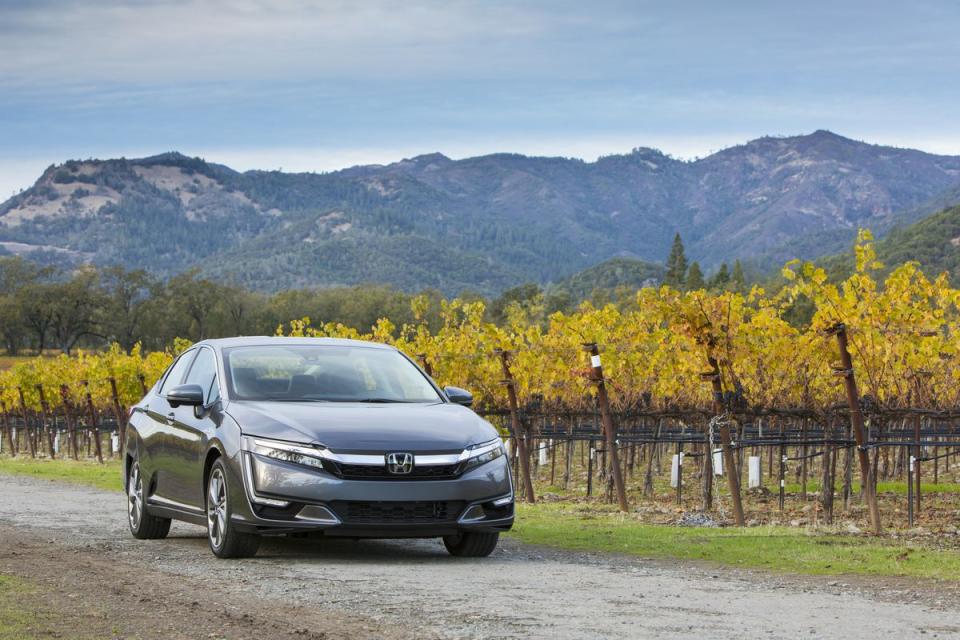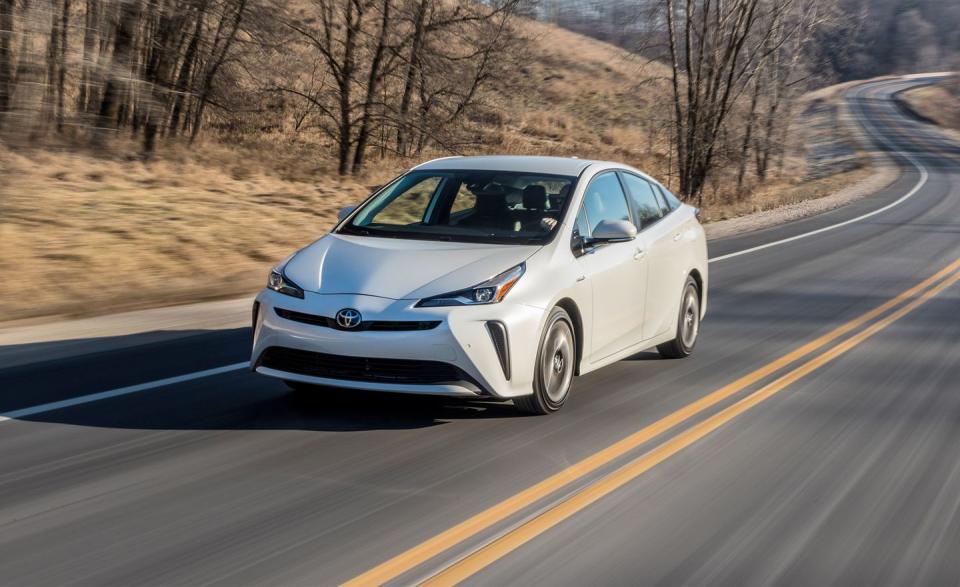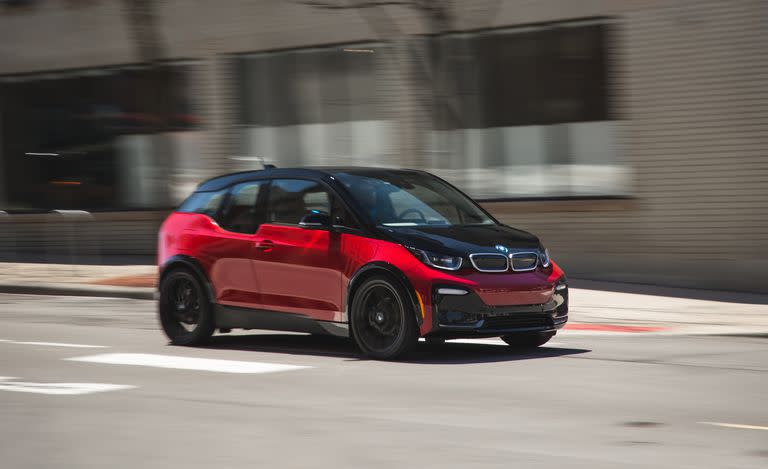Hybrids vs. Plug-In Hybrids

The word "hybrid" means simply "of mixed origin," which perfectly describes both hybrid and plug-in-hybrid vehicles. Hybrid vehicles use a combination of gasoline-fueled engines and electric motors. These share and sometimes trade off the job of delivering power to their drive wheels as needed to provide the best fuel efficiency in every driving condition-in the city, on the highway, and at varying speeds and rates of acceleration.
In addition to hybrids (HEVs) and plug-in hybrids (PHEVs), the universe of electrified vehicles (that is, vehicles that incorporate an electric motor into their powertrain) includes full-electric vehicles (EVs) that are powered solely by a large battery pack and have no gasoline engine. These vehicles are largely defined by the amount of electric assist and electric-only range they provide. They may be small-battery "mild" hybrids-with electric motors that add some acceleration, recover energy during braking, and provide some juice for stop-start systems-or big-battery, long-range EVs. Those are the bookends of the spectrum. HEVs and PHEVs occupy the middle ground, and they will likely represent the majority of electrified vehicles for some years to come. Here are the similarities, differences, and pros and cons of hybrids and plug-in hybrids.

Conventional Hybrids: How They Work
While the first modern HEV was Honda's bullet-shaped, two-seat Insight, which went on sale in 2000, Toyota's Prius quickly surpassed it to become as associated with the term "hybrid" as Google is with internet searches. Conventional hybrids use their gasoline engines to keep their modestly sized batteries charged as you drive, with no need to plug them in, and virtually every major maker offers HEV cars, SUVs, and trucks. These HEVs all deliver substantially better fuel economy than their nonhybrid, gas-engine counterparts in stop-and-go city driving, because they can recapture energy while braking (in exchange for the disadvantages of added complexity and somewhat higher price). However, hybrids do not tend to get substantially improved mileage during steady highway cruising.
HEVs do not have the ability to be plugged in to recharge their battery packs and typically offer only the most fleeting-if any-ability to drive on electric power alone.
Plug-In Hybrids: More Range, More Cost
More than a few manufacturers have taken the further step of adding larger batteries to their hybrids, which you recharge by plugging them into either a standard 120-volt household outlet or a 240-volt charging unit. Recharge times for a typical plug-in hybrid such as the Prius Prime, which is rated at 25 electric-only miles, are about 5.5 hours using 120-volt household current and about two hours on a 240-volt charger.

This ability to charge batteries in advance enables a plug-in hybrid to drive on pure electric power without burning any fuel. Some plug-ins can go 25 miles or more (see the list below). But a PHEV's fuel-saving capability requires a larger battery pack to provide those miles of electric-only driving before its internal-combustion engine kicks in to share the load. That, plus added hardware and software, results in a higher price than a standard hybrid. A Prius plug-in hybrid, for instance, costs several thousand dollars more than the base Prius.
However, a plug-in hybrid never has to be plugged in and will continue operating in "hybrid" mode (using a combination of the gas engine and the electric motor or motors) indefinitely, as long as you keep filling up the gas tank.

Hybrid Costs vs. Hybrid Benefits
Finally, there is the financial side of hybrid ownership. For this, you need to whip out your calculator. Does the inherently higher price of a hybrid or plug-in-hybrid vehicle make sense when compared with similar, conventional gas-engine vehicles? (Some brands offer both a gas and hybrid version of the same model, so there's a direct comparison.) In these days of cheap gasoline, the math often doesn't work out in favor of a hybrid. There are also the costs of 240-volt chargers and their installation if you want fast-charging capability for a PHEV at your house. The charger alone can cost several hundred dollars.
Then again, you may have other reasons for wanting to own a hybrid or a plug-in hybrid. For some of us, it's fun to drive on pure electric power, and for others, the idea of using less fuel, making far fewer stops at the gas station, or doing something positive for the environment outweighs cost concerns. That's for each car buyer to decide. But now you know the pros and cons.
Here is every plug-in hybrid currently for sale in the United States, along with its EPA-rated electric-only driving range (click on the vehicle name to learn more about it):
• BMW i3 / 126 miles
• Chevrolet Volt / 53 miles
• Honda Clarity Plug-In / 48 miles
• Chrysler Pacifica Plug-In / 32 miles
• Hyundai Ioniq Plug-In / 29 miles
• Kia Optima Plug-In / 29 miles
• Hyundai Sonata Plug-In / 28 miles
• Ford Fusion Energi / 26 miles
• Kia Niro Plug-In / 26 miles
• Toyota Prius Prime / 25 miles
• Mitsubishi Outlander Plug-In / 22 miles
• Volvo S60 T8 / 22 miles
• Volvo S90 T8 / 21 miles
• BMW i8 / 18 miles
• Subaru Crosstrek Plug-In / 17 miles
• Volvo XC60 T8 / 17 miles
• Volvo XC90 T8 /17 miles
• BMW 530e / 16 miles
• BMW 740e / 14 miles
• Porsche Panamera 4 e-hybrid / 14 miles
• Porsche Panamera Turbo S e-hybrid / 14 miles
• Mini Cooper S E Countryman All4 / 12 miles
• Mercedes-Benz GLC350e / 10 miles
('You Might Also Like',)

 Yahoo Autos
Yahoo Autos 